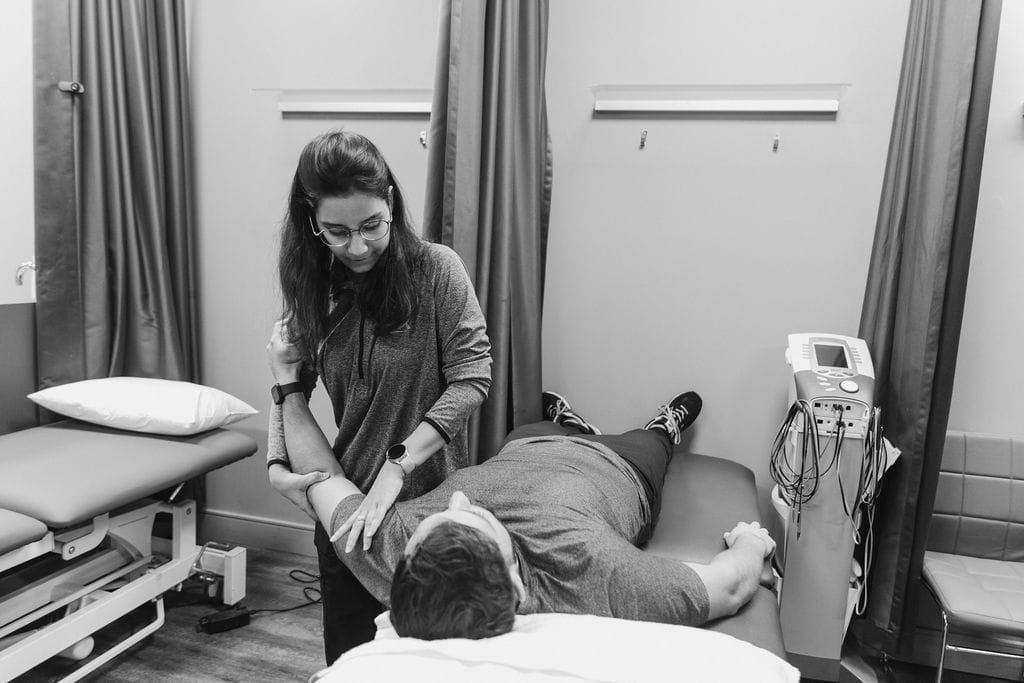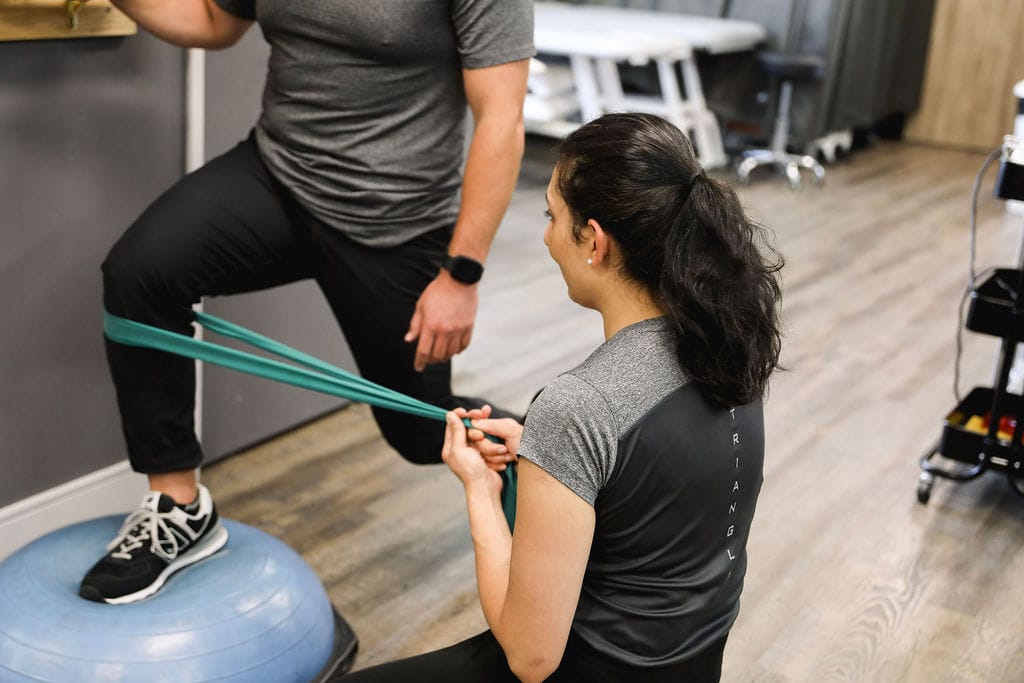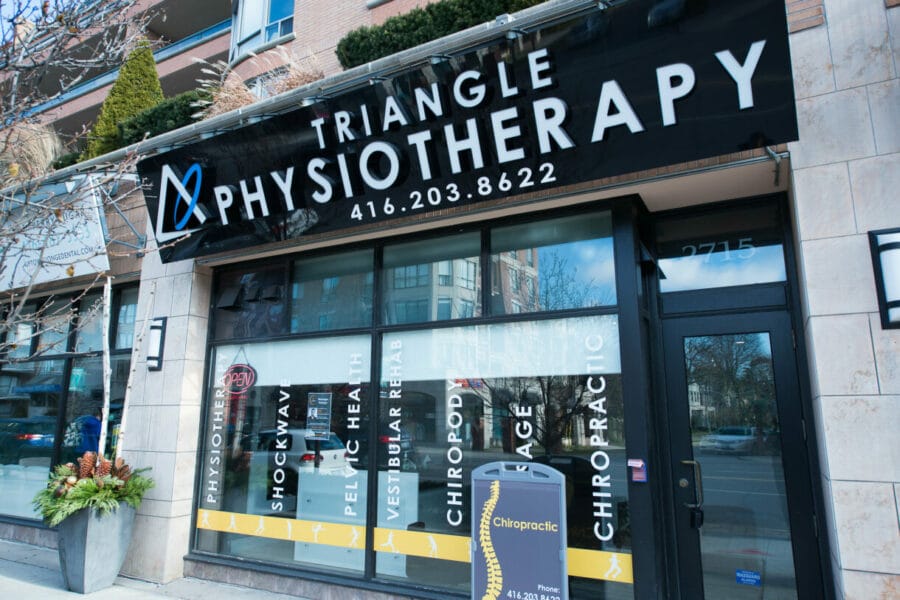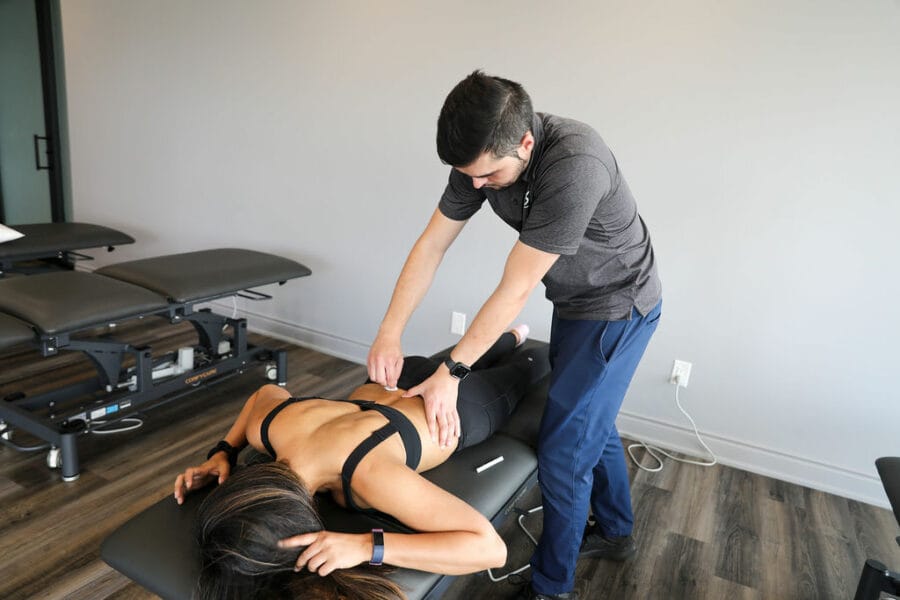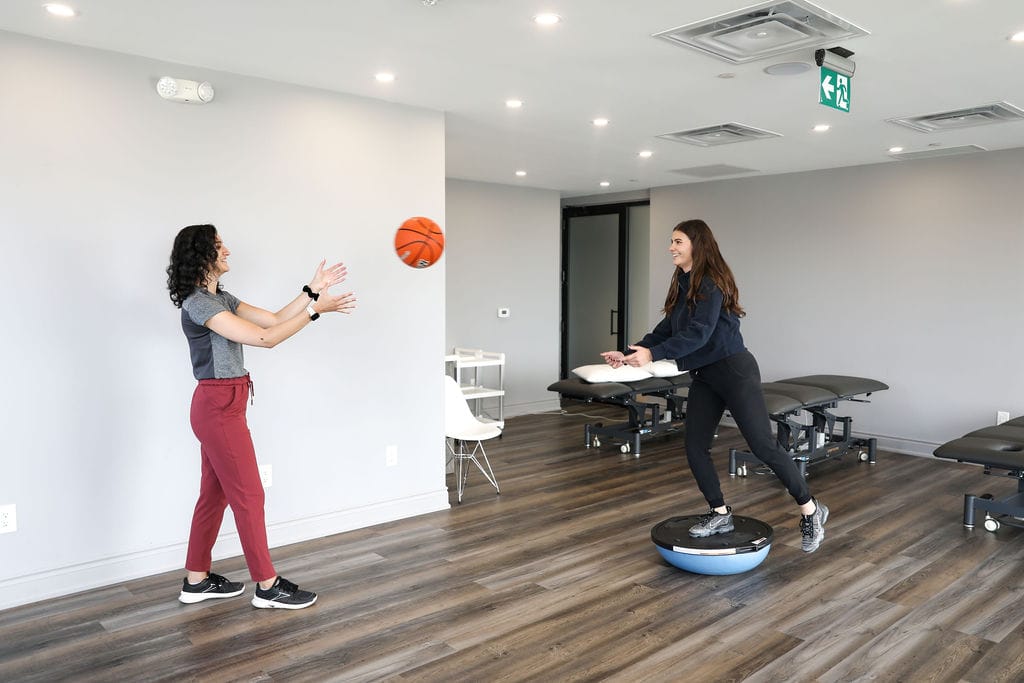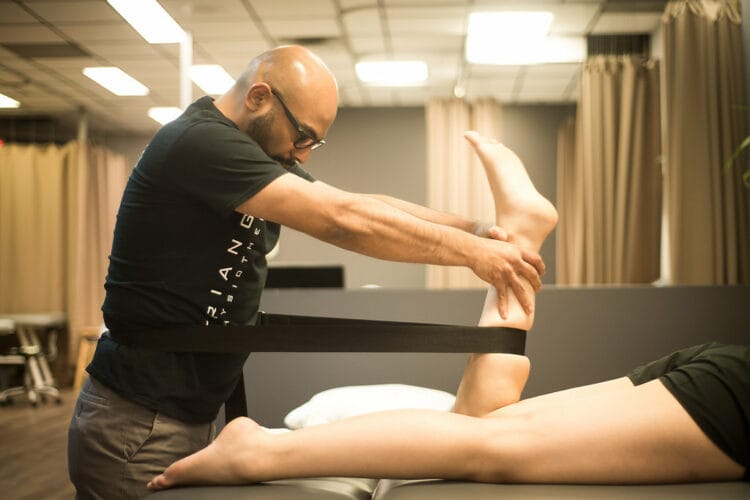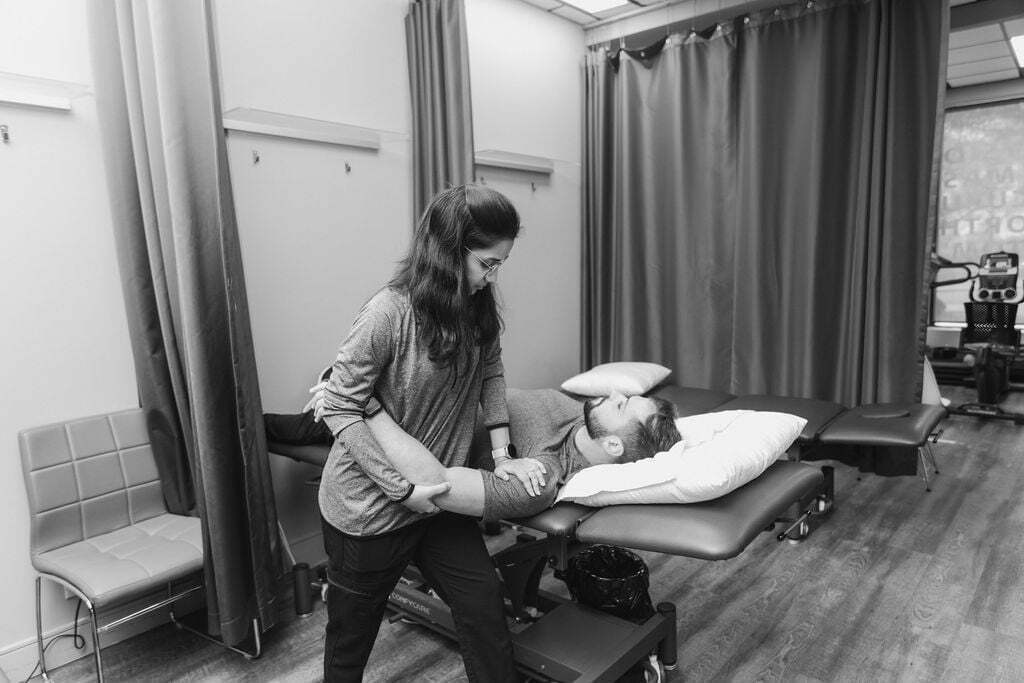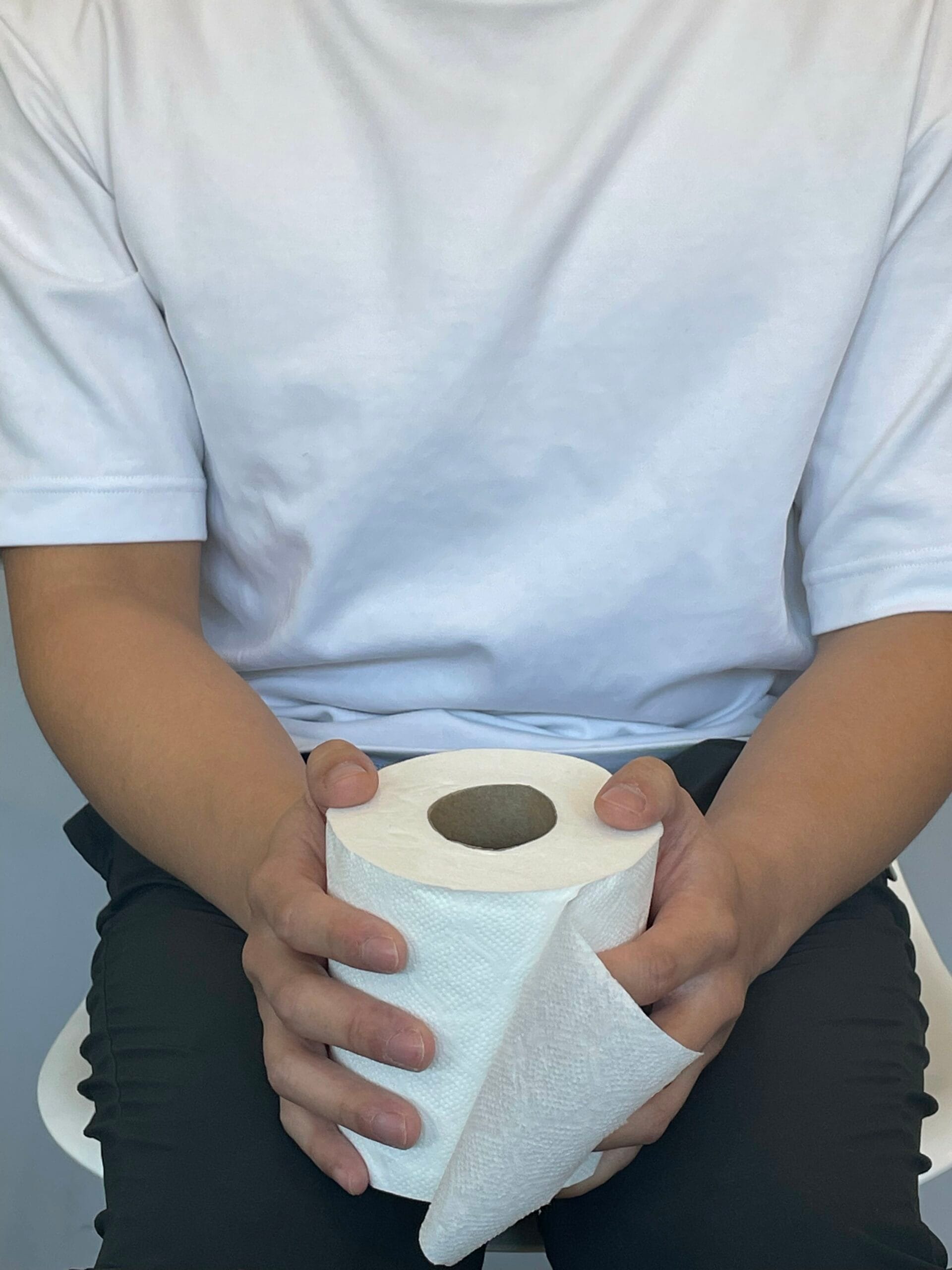Our physiotherapy center in Mississauga is located at 4188 Living Arts Drive, Unit 3, Mississauga L5B0H7. The closest intersection is Living Arts Drive and Burnhamthorpe Road, in the Square One Mall area.
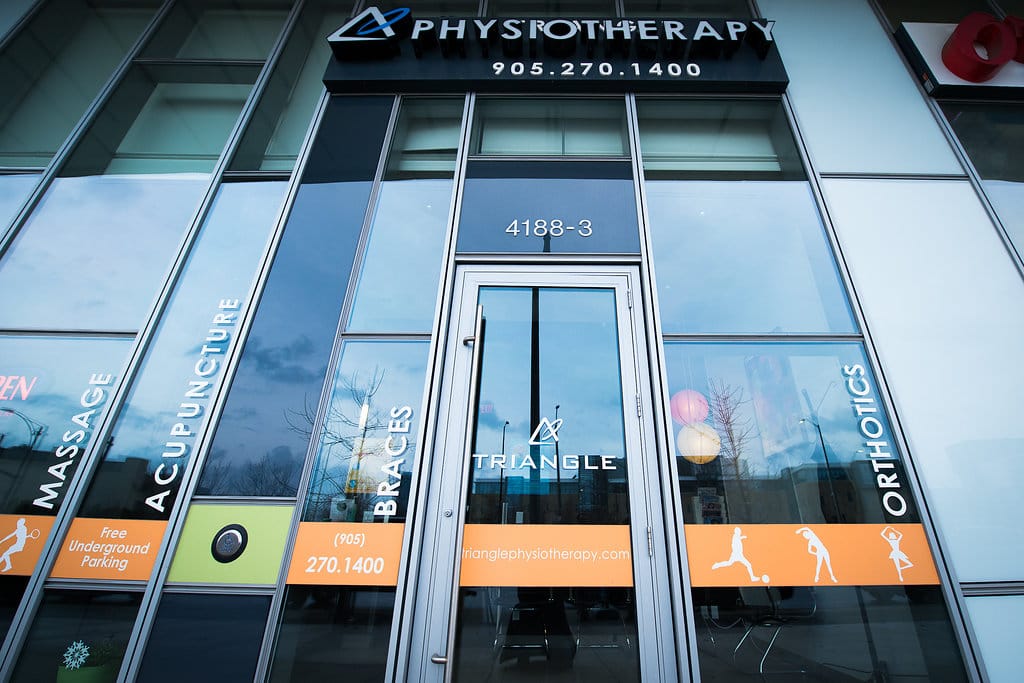
My health is very important to me so I would like to choose the best physiotherapy clinic near me. I have heard great things about you. What makes you the best physiotherapy clinic in Mississauga?
Our patients have told us many times that we offer the best physiotherapy service in Mississauga because from the second they step inside our physio clinic in Mississauga until the end of every session, our physiotherapists at our Mississauga clinic provide them with a one-on-one quality service they deserve.
I went to a physiotherapy clinic near me which I was told was the best physiotherapy clinic in Mississauga but I found out the physiotherapist who was treating me was not registered. Are all the physiotherapists at your Mississauga clinic registered?
Yes, all the physiotherapists at our Mississauga clinic are registered. We go through a rigorous vetting process for applicants when we hire our professionals, as we want to provide the best expertise and service to our patients.
I recently moved to Mississauga and am in search of a physiotherapist near me who could provide me with excellent care like my previous physiotherapist. Which physiotherapist in Mississauga would you recommend I see?
Our physiotherapists in Mississauga are all registered, highly qualified and will provide you with quality care that will exceed your expectations. We have all their profiles on our website for your review. You may also call us and we can discuss your condition further so we may recommend the physiotherapist at our physiotherapy centre in Mississauga, who we feel would best fit your condition.
What kind of services do you offer at your physio clinic in Mississauga and what makes you different from all the other clinics that offer physiotherapy services near me?
Our physiotherapy center in Mississauga offers:
- Physiotherapy,
- Pelvic Health,
- Pediatric Pelvic Health,
- Vestibular Rehab,
- Massage therapy,
- Naturopathy,
- Acupuncture, Dry Needling
- Chiropractic services.
The physio clinic near me does not provide direct billing. I would only like to go to a clinic that can do direct billing for me. Does your physiotherapy center do direct billing or do I need to pay upfront for the physiotherapy services?
Yes, our physio clinic in Mississauga offers direct billing to most insurance companies to save you time and provide you with a stress free experience.
I have vertigo and am in search of a Vestibular physiotherapist near me. Do you have a Vestibular physiotherapist in your Mississauga location?
Yes, we have a Vestibular physiotherapist at our Mississauga location. Here at the physiotherapy clinic in Mississauga, our vestibular physiotherapist will conduct a thorough assessment to establish the root of your problem and design a customised program of balance exercises to help resolve your symptoms.
If you have Vertigo (BPPV) this can be treated with a simple head maneuver called the Epley’s maneuver.
Your treatment will include exercises and education about your condition.
Who would benefit from pelvic floor physiotherapy?
Pelvic health physiotherapy is the therapeutic treatment of all disorders affecting the pelvis and pelvic floor. From incontinence to prolapse, pelvic pain, or constipation, there is growing evidence that physiotherapy can alleviate, and in many cases cure these symptoms. Pelvic physiotherapists are experienced in treating men and women.
Click HERE to book an appointment with a physiotherapist at one of our eight locations.
- Physiotherapy Etobicoke – Triangle Physiotherapy Etobicoke
- Oakville Physiotherapy Clinic – Triangle Physiotherapy Oakville
- Physiotherapy North York – Triangle Physiotherapy North York
- Mississauga Physiotherapy Clinics – Triangle Physiotherapy Mississauga
- Downtown Physiotherapy Clinics – Triangle Physiotherapy King West
- Uptown Physiotherapy Clinics – Triangle Physiotherapy Lawrence Park
- Physiotherapy Clinic Downtown Toronto – Triangle Physiotherapy Queens Quay
- Physiotherapy Clinics Mississauga – Triangle Physiotherapy Erin Mills
“Finding the closest physiotherapy clinic in Mississauga is essential for convenient access to care. Triangle Physiotherapy offers expert services across the GTA, including Physiotherapy Etobicoke, Physiotherapy Oakville, Physiotherapy North York, Physiotherapy Toronto, Physiotherapy Lawrence Park, Physiotherapy Queens Quay, Physiotherapy Erin Mills, Physiotherapy Mississauga, and Liberty Village. Our clinics are strategically located to provide you with the highest quality physiotherapy services close to home.”
Stretching can be beneficial for relieving lower back pain and improving flexibility and mobility.
What are some of the best stretches for the lower back?
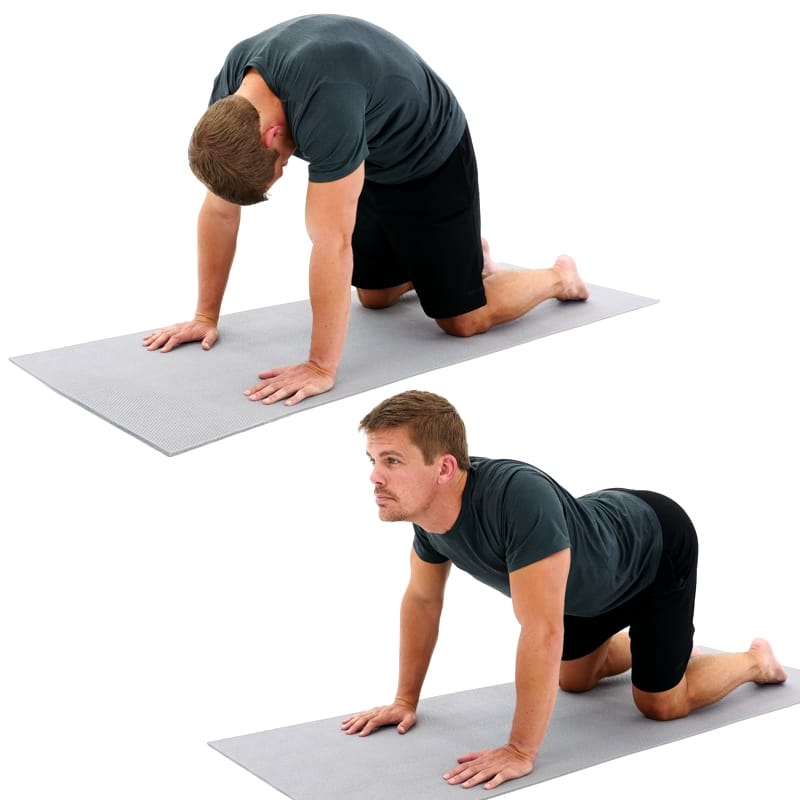
Cat-Cow is one of the best stretches for the low back which gentle flow between two poses that warms the body and brings flexibility to the spine. It stretches the back torso and neck, and softly stimulates and strengthens the abdominal organs.
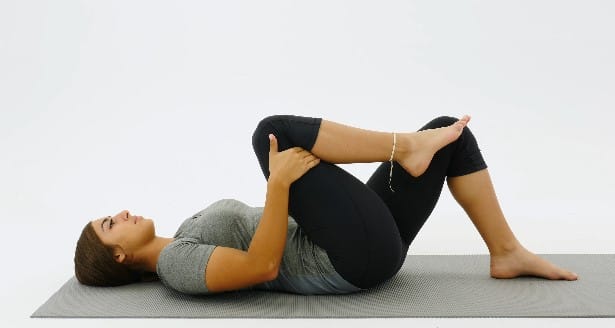
Knee-to-Chest Stretch: Lie on your back with your knees bent. Slowly bring one knee toward your chest, grasping it with your hands and gently pulling it closer. Hold for 20-30 seconds, then repeat with the other leg.
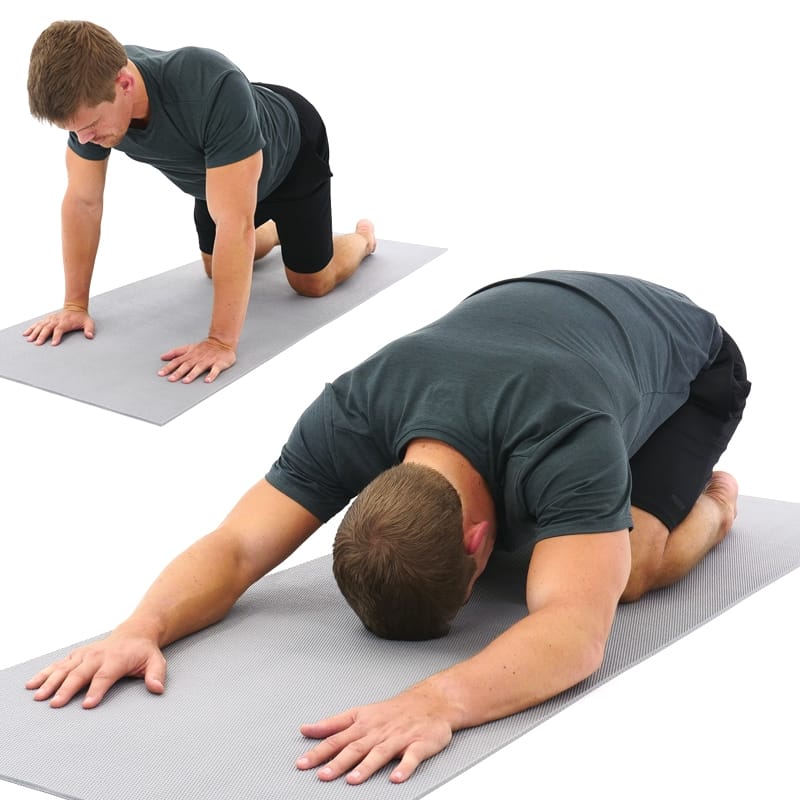
Child’s Pose is one of the best stretches for the low back and provides a gentle stretch for the back, hips, thighs, and ankles. It can help relieve back pain. Start on your hands and knees, then sit back on your heels while extending your arms forward and lowering your forehead to the ground. This stretch gently stretches the lower back.
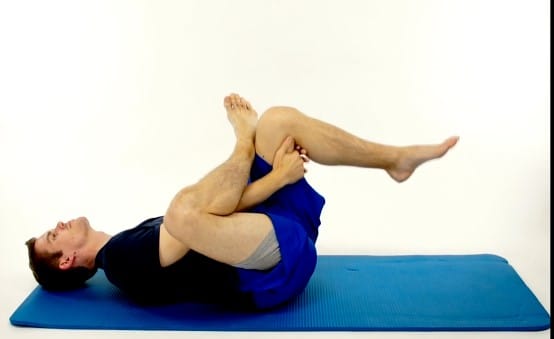
Piriformis Stretch: Lie on your back with your knees bent. Cross one ankle over the opposite knee, then gently pull the uncrossed leg towards your chest until you feel a stretch in your buttocks. Hold for 20-30 seconds and switch sides.

Figure 4 Stretch: Lie on the ground or treatment table with your legs extended in front of you. Cross one ankle over the opposite knee, then gently lean forward, keeping your back straight, until you feel a stretch in your buttocks and outer hip. Hold for 20-30 seconds and switch sides.
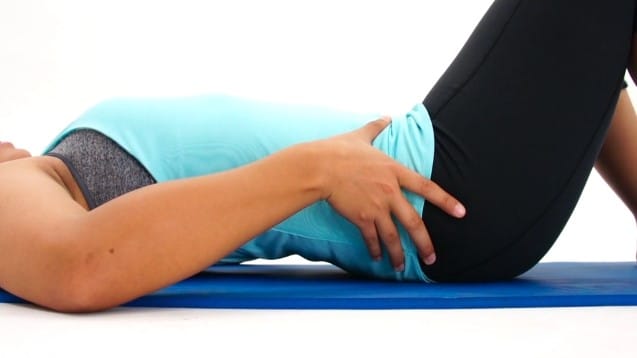
Pelvic Tilt: Lie on your back with your knees bent and feet flat on the ground. Gently flatten your lower back against the floor by tilting your pelvis upward. Hold for a few seconds, then release. Repeat 10-15 times.
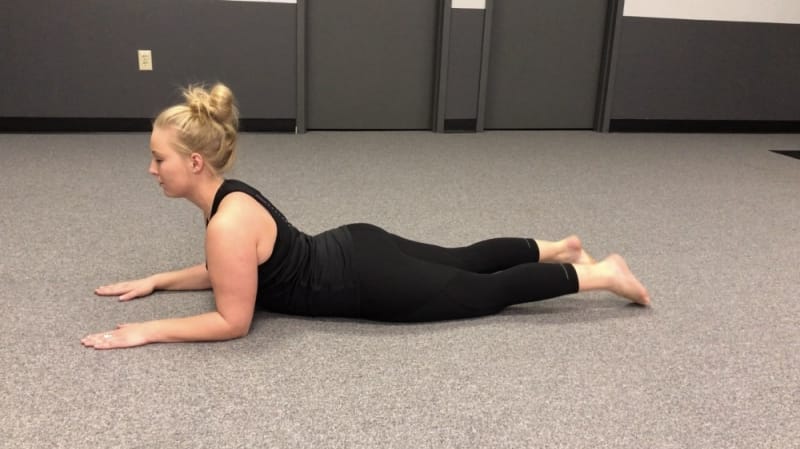
Sphinx Pose: Lie on your stomach and prop yourself up on your forearms, keeping your elbows directly beneath your shoulders. Press your forearms into the ground to lift your upper body, arching your back gently. Hold for 20-30 seconds.
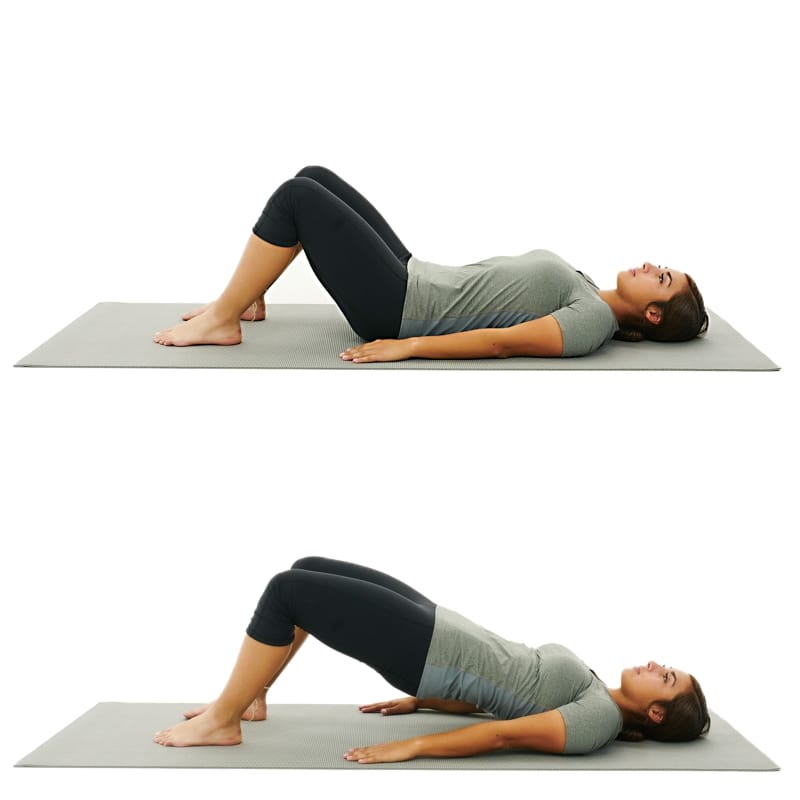
Lie on your back with your knees bent, feet flat on the floor. Lift your hips off the ground, forming a straight line from knees to shoulders.
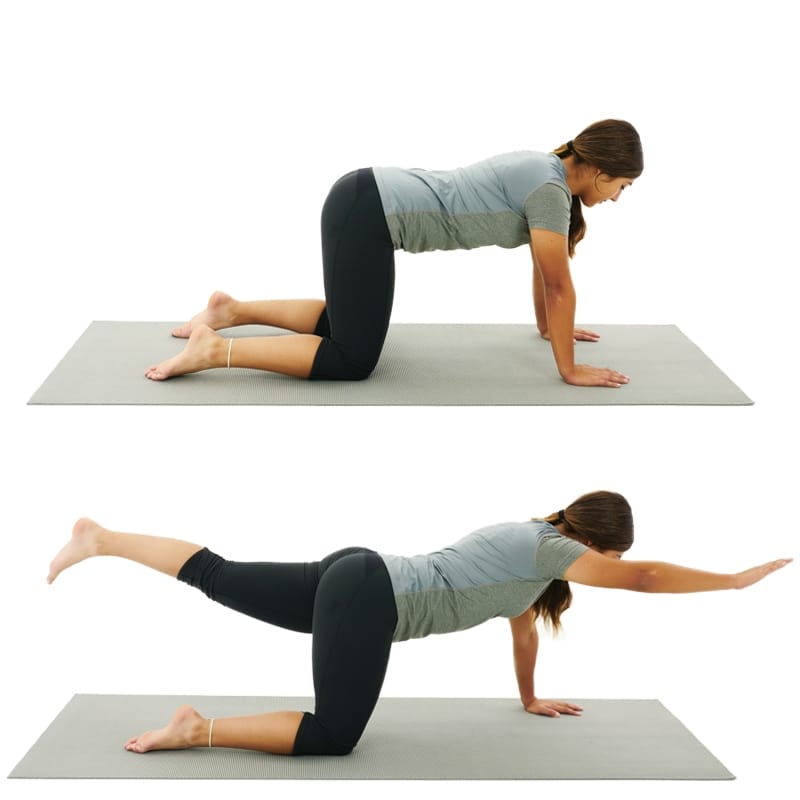
Bird Dog: While in a crawling position, tighten/brace at your abdominal muscles and then slowly lift a leg and opposite arm upwards. Your hip will move into a hip extension on the way up. Lower leg and arm down and then repeat with the opposite side.
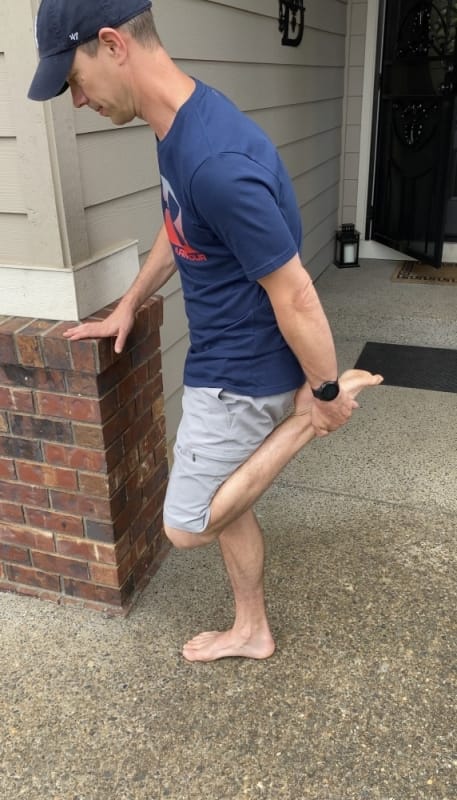
Standing Quadriceps Stretch: Stand tall and hold onto a stable object for balance. Bend one knee, bringing your heel toward your buttocks, then grasp your foot with your hand. Hold for 20-30 seconds and switch legs.
Should I stretch my lower back if it hurts?
Doing regular stretching exercises can help with lower back pain by maintaining your posture, strengthening your back and abdominal muscles, and improving flexibility.
What is the best position to sit in with lower back pain?
The best position to sit in with lower back pain is with a back support such as a rolled-up towel or lumbar roll, at the curve of your back. Keep your hips and knees at a right angle. Use a foot stool if necessary. Your legs must not be crossed and your feet should lie flat on the floor. It is also advisable to stretch and move around as much as possible.
Click HERE to book an appointment with a physiotherapist at one of our eight locations.
- Physiotherapy Etobicoke – Triangle Physiotherapy Etobicoke
- Oakville Physiotherapy Clinic – Triangle Physiotherapy Oakville
- Physiotherapy North York – Triangle Physiotherapy North York
- Mississauga Physiotherapy Clinics – Triangle Physiotherapy Mississauga
- Downtown Physiotherapy Clinics – Triangle Physiotherapy King West
- Uptown Physiotherapy Clinics – Triangle Physiotherapy Lawrence Park
- Physiotherapy Clinic Downtown Toronto – Triangle Physiotherapy Queens Quay
- Physiotherapy Clinics Mississauga – Triangle Physiotherapy Erin Mills
“Stretching is a key component in managing lower back pain effectively. Triangle Physiotherapy offers expert services across the GTA, including Physiotherapy in Etobicoke, Oakville, North York, Toronto, Lawrence Park, Queens Quay, Erin Mills, Mississauga, and Liberty Village. Our experienced physiotherapists can help you develop a personalized stretching routine to alleviate pain and improve your mobility.”
When choosing a physiotherapy clinic, it’s essential to find a clinic that has physiotherapists that meet your specific needs and can provide high-quality care.
Which is the closest Physiotherapy clinic near me in the Erin Mills area of Mississauga?
Our physiotherapy center at Erin Mills in Mississauga is located in the Arc Condominiums at 2520 Eglinton Avenue, W, on the SECOND Floor. The closest intersection is Erin Mills Parkway & Eglinton Ave W across from Erin Mills Town Center and Credit Valley Hospital.
Is there a highly qualified physiotherapist at your physio clinic in Mississauga who you would recommend I see?
Our physiotherapy center in Mississauga has highly qualified professional physiotherapists with many years of experience. We have physiotherapists with FCAMPT designation, which is the highest certification in manual therapy. Our physiotherapists are also trained in specialties like dry needling, pelvic health and cancer rehab.
We also have a team of highly skilled professionals including physiotherapists, massage therapists, acupuncturists, chiropractic doctors as well as naturopathic doctors. You are welcome to read their profiles on our website or call us for more information.
Do all your physiotherapy centers offer physiotherapy services, massage services, and chiropractic services?
Yes, all of our clinics offer the following services:
- Physiotherapy
- Pelvic Floor Physiotherapy
- Acupuncture and Dry Needling
- Vestibular Rehab Therapy
- Chiropractic
- Massage therapy
- Naturopathic Medicine
Are the fees for all physiotherapy services, massage services and chiropractic services the same in all your physiotherapy centers?
Yes, our fees at all eight locations are the same for all physiotherapy services.
I have tried a physio clinic near me but I wasn’t satisfied with the service they have provided me and I would like to try another physio clinic near me. How many clinics do you have in Mississauga?
We have two locations in Mississauga, Triangle Physiotherapy by Erin Mills Mall and Triangle Physiotherapy by the Square One Shopping Centre.
I have been searching for physiotherapy clinics near me that offer Shockwave physiotherapy service, does your clinic offer this?
Yes, our physiotherapy clinic in Erin Mills has shockwave therapy as well as other Physiotherapy modalities available to provide the best treatment possible for our patients.
I recently found out that the physiotherapy clinic near me has registered physiotherapists at their physiotherapy clinic. I would like to move to a physio clinic near me, are all your physiotherapists in Erin Mills registered?
Yes, all our physiotherapists at the Erin Mills clinic are registered physiotherapists and highly qualified.
I have seen many physiotherapists in Erin Mills but I have yet to see improvement in my condition. Are all your physiotherapists in your Physiotherapy clinic in Mississauga registered and am I able to choose which registered physiotherapist I would like to book with?
All our physiotherapists will take excellent care of you, but you’re more than welcome to choose which physiotherapist you would like to book with. You may check their profiles on our website and inform us who you would like to book with when you request an appointment.
Many Physiotherapy centers claim to be the best physiotherapy clinic in Mississauga but I have personally heard from a friend who I trust that you are indeed the best physiotherapy clinic in Mississauga. How do I book an appointment?
You may call, email, or send us a message on the chat feature on our website, and we will gladly help you book an appointment at a time that is most convenient for you. You may also submit a booking request by clicking here.
What is physiotherapy?
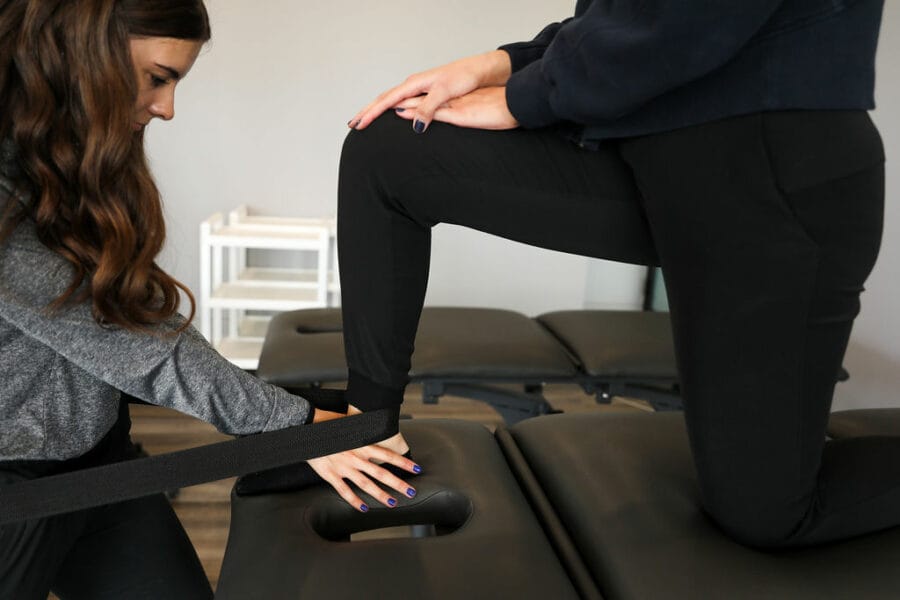
Orthopaedic Physiotherapy is the assessment and treatment of all musculoskeletal conditions (including back and neck pain, fractures, and sprains) caused by repetitive “wear and tear,” sports injuries, falls, car accidents, or surgeries. The problem can be acute or chronic. Manual therapy, education, active exercise therapy, soft tissue release, and joint mobilizations are the focus of treatments at Triangle Physiotherapy in Erin Mills, to allow you to regain strength, flexibility, balance, and full movement and function.
Our physio clinic Erin Mills, Mississauga has qualified and expert physiotherapists to help you with any musculoskeletal, vestibular, or pelvic health issues.
How is physiotherapy beneficial and what conditions can it treat?
Physiotherapists apply their extensive scientific knowledge of anatomy and physiology to:
- Assess, diagnose, and treat injuries & conditions that affect people of all ages and social groups
- Assist a patient to prevent injury in the workplace or on the sports field
- Promote healthier lifestyles for all
By choosing Triangle Physiotherapy in Mississauga you can rest assured that your physiotherapist is a registered professional with the highest qualifications. This means that they have undergone rigorous scientific training and that they continue to stay up to date with current practices.
Physiotherapy can help a wide variety of conditions including the following:
- Sports injuries
- Posture & movement correction
- Low back pain
- Neck pain & Whiplash
- Headaches
- Shoulder pain
- Ankle sprains
- Knee pain
- Shin splints
- Groin & hip injuries
- Muscular corks/contusions/tears
- Osteoarthritic/degenerative joint pain and more.
What are the different types of physiotherapy?
There are different types of specializations in physiotherapy, some of which are listed below:
- Orthopedic Physiotherapy
- Pelvic Floor Physiotherapy
- Vestibular Physiotherapy
- Cancer Rehab Physiotherapy
- Neurological Physiotherapy
- Sports Physiotherapy
- Pediatric Physiotherapy
Who would benefit from pelvic floor physiotherapy?
Pelvic Floor Physiotherapists are specifically trained in diagnosing and treating conditions associated with the pelvic floor muscles. This usually refers to muscles involved in reproductive and digestive processes in the body. While these muscles are in close proximity to muscles commonly involved in lower back problems, and sometimes even overlap, physiotherapy treatment for the lower back involves significantly different techniques.
Men, women, and children with pelvic floor dysfunction can benefit from pelvic floor physiotherapy.
What can I expect from my pelvic floor physiotherapy appointment?
When attending an appointment at our Mississauga Pelvic Health clinic for the first time, you will be asked to fill in a new patient information form prior to your initial visit. We highly recommend filling out your forms at home through our user-friendly patient portal, the link for which will be sent to you as soon as you book your session.
We will endeavor to make your first visit to our clinic a comfortable experience.
At your initial consultation, your physiotherapist will:
- Conduct a thorough examination including history taking and a physical assessment, which may include an internal examination of your pelvic area;
- Give you a working diagnosis of your condition;
- Education
- Treatment Plan
The initial visit will be an hour long and follow-up visits can range from 30 minutes to an hour depending on the amount of time your physiotherapist needs with you.
Who performs acupuncture at your physiotherapy clinic in Mississauga, Erin Mills location?
At Triangle Physiotherapy Erin Mills, acupuncture treatment is carried out by our physiotherapists, who have undergone specialized training. They use acupuncture or dry needling as part of their physiotherapy treatment to reduce pain and stimulate the healing process.
In addition to our physiotherapists, our acupuncturist also has specialized training in needling and can help with conditions such as:
- Pain
- Stress & anxiety
- Sleep & insomnia
- Allergies
- Respiratory issues
- Women’s health
- Dizziness & Vertigo
- Asthma
- Weakness & Fatigue
What conditions can vestibular physiotherapy be beneficial for?
Vestibular rehabilitation is a specialized form of therapy primarily aimed at reducing symptoms of vertigo, dizziness, visual disturbance, and/or imbalance. Research suggests that it is beneficial, safe & effective.
Vestibular rehabilitation can benefit patients of any age and can be effective for long-standing symptoms, although it is advisable to start as soon as possible.
Treatment plans for vestibular conditions depend on the presenting symptoms, medical history, diagnostic test results, and physical examination. Treatment will be goal focused and progressive and you will be provided with exercises to complete independently on a regular basis.
How do I find a pelvic health physiotherapist near me?
We have 8 locations with pelvic health physiotherapists to help you. Book an Appointment today!
- Pelvic Health Physiotherapy Etobicoke – Triangle Physiotherapy Etobicoke
- Oakville Pelvic Health – Triangle Physiotherapy Oakville
- Pelvic Health Physiotherapy North York – Triangle Physiotherapy North York
- Mississauga Pelvic Health – Triangle Physiotherapy Mississauga
- Downtown Pelvic Health – Triangle Physiotherapy King West
- Uptown Toronto Pelvic Health – Triangle Physiotherapy Lawrence Park
- Pelvic Physiotherapy Downtown Toronto – Triangle Physiotherapy Queens Quay
- Mississauga Pelvic Health – Triangle Physiotherapy Erin Mills
“Finding the closest physiotherapy clinic is important for convenient and effective care. Triangle Physiotherapy offers expert services across the GTA, including Physiotherapy in Etobicoke, Oakville, North York, Toronto, Lawrence Park, Queens Quay, Erin Mills, Mississauga, and Liberty Village. Our clinics are easily accessible, providing high-quality physiotherapy to help you achieve your health goals.”
How do I choose the Best Physiotherapist Near Me?

When choosing a physiotherapist, it’s essential to find someone who meets your specific needs and can provide high-quality care. Here are some steps you can take to help you pick the best physiotherapist:
- Ask for recommendations: Ask your friends, family, or colleagues for recommendations. Personal referrals can be valuable as they come from people you trust.
- Research their experience and specialization: Look for a physiotherapist with experience and expertise in treating your specific condition or injury. Physiotherapy covers a broad range of areas, such as sports injuries, post-surgery rehabilitation, back pain, or neurological disorders. Choosing someone who specializes in your area of concern can increase the chances of effective treatment.
- Check credentials and qualifications: Ensure that the physiotherapist you’re considering is licensed and registered to practice in Ontario. You can usually verify their credentials through the College of Physiotherapists of Ontario.
- Read reviews and testimonials: Search online for reviews or testimonials from previous patients. Although individual experiences may vary, reading about others’ experiences can give you an idea of the physiotherapist’s reputation and patient satisfaction.
- Assess communication and rapport: A good physiotherapist should listen and communicate well. They should be able to understand your concerns, explain your condition or treatment plan clearly, and answer any questions you may have. It’s important to feel comfortable and have a good rapport with your physiotherapist to ensure a positive therapeutic relationship.
- Consider practical factors: Take into account the location of the physiotherapy clinic or practice. It’s generally more convenient to choose a clinic that is easily accessible to you, whether it’s close to your home or workplace. Additionally, check their availability and scheduling options to see if they can accommodate your needs.
- Insurance coverage: If you have health insurance, check if the clinic provides direct billing to your insurance. This way you only have to pay a copayment or deductible if required by your plan.
- Initial Assessment: Schedule an initial assessment with the physiotherapist to discuss your condition, treatment options, and their approach. This can give you a sense of their knowledge, professionalism, and whether their treatment philosophy aligns with your goals.
What are the types of specializations that physiotherapists can have?
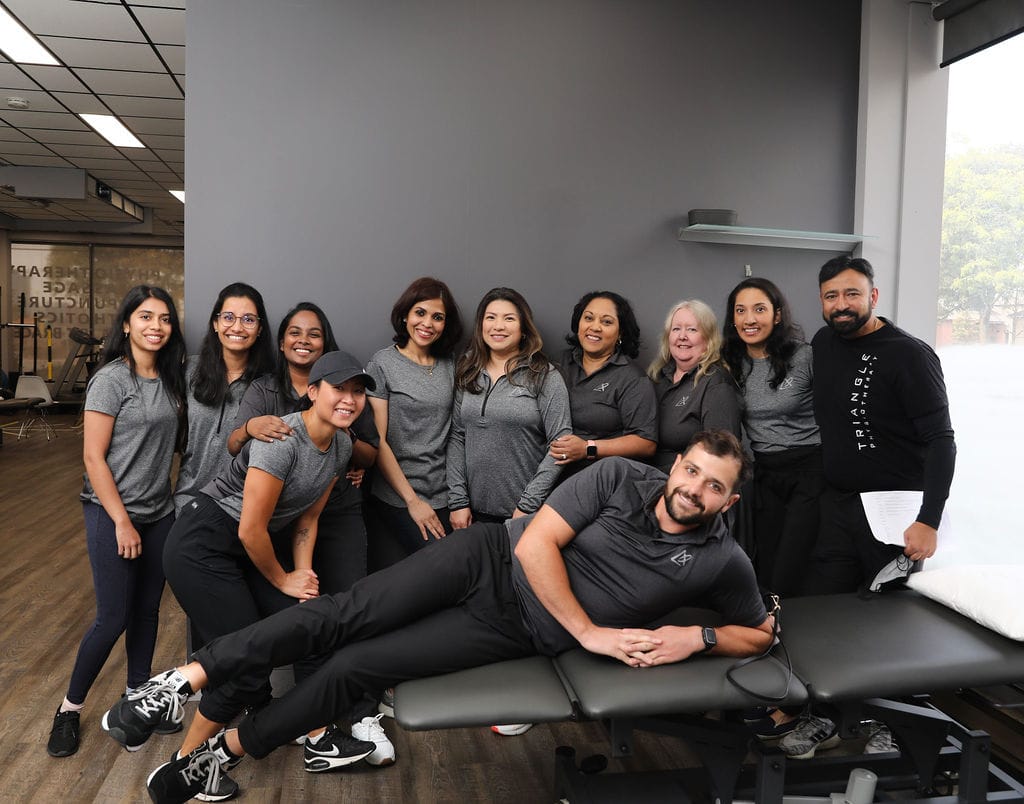
Physiotherapists have training in assessing, diagnosing, and treating a wide range of physical conditions and injuries. Physiotherapists can specialize in various areas of practice based on their interests, expertise, and advanced training. Some common specializations that our physiotherapists in Toronto have include:
- FCAMPT – The highest level of training in orthopedic manual therapy
- McKenzie Certification
- Cancer Rehab
- Pelvic Health – Assessing and treating pelvic floor conditions in men and women
- Vestibular Rehab & Concussion Therapy
- Running Assessments
- Sports Physiotherapy
These are just a few examples of the specializations within physiotherapy. It’s worth noting that some physiotherapists may have expertise in multiple areas or choose to focus on specific sub-specialties within these broader categories.
Our More Locations
Physiotherapy Etobicoke | Physiotherapy Oakville | Physiotherapy North York | Physiotherapy Toronto | Physiotherapy Lawrence Park | Physiotherapy Mississauga | Physiotherapy Queens Quay | Physiotherapy Mississauga Erin Mills | Physiotherapy Liberty Village
Click HERE to book an appointment with a physiotherapist at one of our eight locations.
- Physiotherapy Etobicoke – Triangle Physiotherapy Etobicoke
- Oakville Physiotherapy Clinic – Triangle Physiotherapy Oakville
- Physiotherapy North York – Triangle Physiotherapy North York
- Mississauga Physiotherapy Clinics – Triangle Physiotherapy Mississauga
- Downtown Physiotherapy Clinics – Triangle Physiotherapy King West
- Uptown Physiotherapy Clinics – Triangle Physiotherapy Lawrence Park
- Physiotherapy Clinic Downtown Toronto – Triangle Physiotherapy Queens Quay
- Physiotherapy Clinics Mississauga – Triangle Physiotherapy Erin Mills
“Choosing the best physiotherapist near you is crucial for effective treatment and recovery. Triangle Physiotherapy offers expert services across the GTA, including Physiotherapy in Etobicoke, Oakville, North York, Toronto, Lawrence Park, Queens Quay, Erin Mills, Mississauga, and Liberty Village. Our experienced team is dedicated to providing personalized care tailored to your needs, helping you achieve your health goals.”
Q: Why do I experience back pain while working from home?
A: Back pain during work from home can be caused by various factors. Some common reasons include:
- Poor posture,
- Inadequate ergonomics,
- Prolonged sitting,
- Lack of physical activity, and
- Stress
Working from home often means using suboptimal workstations, such as sitting on a couch or using a kitchen table as a desk, which can contribute to poor posture and strain on the back muscles.
Q: How can I improve my posture while working from home?
A: Improving your posture can help reduce back pain. Here are some tips:
- Use a comfortable chair with good lumbar support.
- Sit up straight and align your head, neck, and spine.
- Keep your feet flat on the floor or use a footrest if needed.
- Position your computer monitor at eye level to avoid straining your neck.
- Take breaks and stretch regularly to prevent prolonged sitting.
Q: What are some ergonomic recommendations for a home office setup?
A: Consider the following ergonomic recommendations for a home office setup:
- Invest in an adjustable chair with proper lumbar support.
- Use a desk or workstation at an appropriate height to maintain proper alignment.
- Position your keyboard and mouse at a comfortable distance and height.
- Ensure your computer monitor is at eye level and about an arm’s length away.
- Use a document holder if you frequently refer to papers or documents.
- Consider using an ergonomic keyboard and mouse to minimize strain on your hands and wrists.
Q: How can I incorporate physical activity into my work-from-home routine?
A: Adding physical activity to your work-from-home routine can help alleviate back pain. Here are some suggestions:
- Take short breaks every hour to stretch and move around.
- Incorporate exercises such as walking, jogging, or cycling into your daily routine.
- Consider using a standing desk or an adjustable desk converter that allows you to alternate between sitting and standing.
- Engage in exercises specifically targeting core strength and back muscles, like yoga or Pilates.
- Schedule regular exercise breaks or participate in online workout classes during your breaks.
Q: Are there any specific exercises that can help relieve back pain while working from home?
A: Yes, certain exercises can help relieve back pain. Here are a few examples:
- Cat and Camel

Get on your hands and knees, arch your back upward like a cat, then lower it down like a camel.
2. Back Extensions
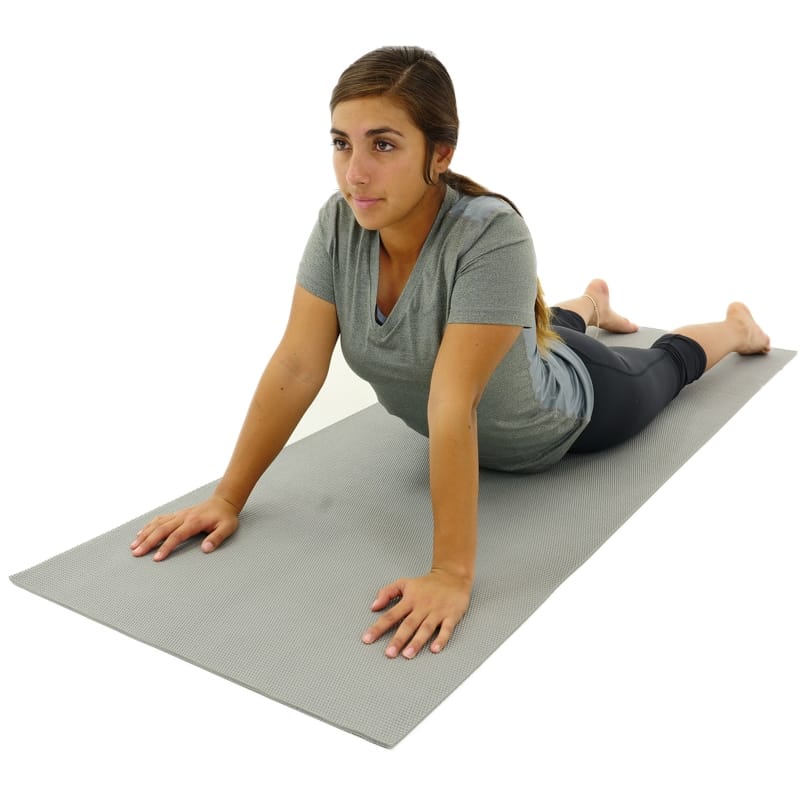
Lie face down, place your hands under your shoulders, and slowly lift your upper body off the ground while keeping your pelvis on the floor.
3. Bridge Pose

Lie on your back with your knees bent, feet flat on the floor. Lift your hips off the ground, forming a straight line from knees to shoulders.
4. Child’s Pose
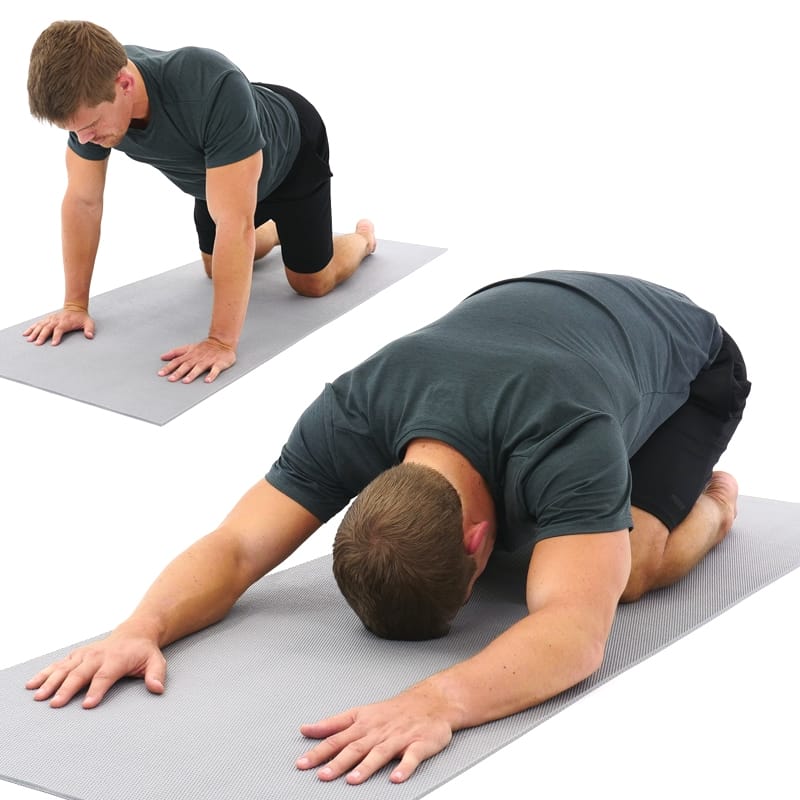
Kneel on the floor, then sit back on your heels while lowering your upper body forward, reaching your arms out in front of you.
Remember to consult with a physiotherapist for personalized advice on exercises and stretches for your specific condition.
Q: How can I manage stress-related back pain while working from home?
A: Stress can contribute to back pain. Here are some strategies to manage stress:
- Practice relaxation techniques such as deep breathing exercises, meditation, or mindfulness.
- Maintain a healthy work-life balance by setting clear boundaries between work and personal time.
- Engage in stress-reducing activities outside of work, such as hobbies, exercise, or spending time
Click HERE to book an appointment with a physiotherapist at one of our eight locations.
- Physiotherapy Etobicoke – Triangle Physiotherapy Etobicoke
- Oakville Physiotherapy Clinic – Triangle Physiotherapy Oakville
- Physiotherapy North York – Triangle Physiotherapy North York
- Mississauga Physiotherapy Clinics – Triangle Physiotherapy Mississauga
- Downtown Physiotherapy Clinics – Triangle Physiotherapy King West
- Uptown Physiotherapy Clinics – Triangle Physiotherapy Lawrence Park
- Physiotherapy Clinic Downtown Toronto – Triangle Physiotherapy Queens Quay
- Physiotherapy Clinics Mississauga – Triangle Physiotherapy Erin Mills
“Working from home can lead to back pain, but with the right strategies and physiotherapy, you can find relief. Triangle Physiotherapy offers expert services across the GTA, including Physiotherapy in Etobicoke, Oakville, North York, Toronto, Lawrence Park, Queens Quay, Erin Mills, Mississauga, and Liberty Village. Our experienced physiotherapists can help you develop a personalized plan to manage and prevent back pain while working from home.”
After a breast cancer diagnosis, many women are left to face new challenges caused by the side effects of their cancer treatments. While some side effects tend to disappear on their own over time, many side effects can have long-lasting physical and emotional consequences.
What are the common side effects of breast cancer treatment?
Breast surgery, such as a mastectomy, lumpectomy, or reconstruction, can cause many women to experience pain and physical limitations such as difficulty moving their arm, weakness, swelling, and scar tightness. In addition, some women may also develop pathologies such as post-mastectomy pain syndrome and axillary web syndrome following surgery.
Furthermore, both chemotherapy and radiation therapy also have their side effects, including fatigue, tingling, numbness in the hands/feet (chemotherapy-induced peripheral neuropathy), and radiation fibrosis, among many others.
These physical and psychological side effects of breast cancer treatments can significantly impact your daily functioning and independence both at home and at work. Research shows that both physiotherapy and exercise can help to alleviate many of these side effects and play an essential role in your recovery during and after breast cancer.
What are the benefits of breast cancer rehabilitation?
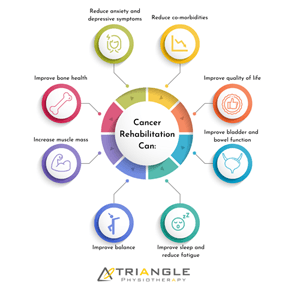
Physiotherapy interventions can help you to:
- Restore your arm movement
- Improve your shoulder, trunk, and abdominal strength
- Decrease your pain
- Improve your flexibility
- Improve your energy and endurance
- Reduce your risk of developing lymphedema
- Improve your posture and body awareness
In addition, exercise is also known to address many side effects, such as bone density issues related to hormonal medication, reducing your risk of developing lymphedema, and improving cancer-related fatigue in addition to also reducing your risk of reoccurrence. Physiotherapists are exercise specialists who will work with you to provide a safe and effective exercise program.
At Triangle, we are committed to helping women improve their health and well-being during each stage of their cancer recovery.
What are the components of breast cancer rehabilitation?
Every woman undergoing breast cancer treatment is different and hence will have unique rehabilitation needs. Your physiotherapist will use a combination of treatment techniques best suited for your condition. Interventions may include:
- Manual (hands-on) techniques such as soft-tissue mobilization and myofascial release to improve your flexibility and manage conditions such as radiation fibrosis and axillary web syndrome.
- Scar Massage
- Exercises to improve your shoulder movement and strength
- Exercises to improve your endurance and overall energy levels
- Individualized education regarding risk reduction and early detection of lymphedema
- Energy conservation techniques
- Education on how to return to physical activity
- Home exercise program
What are the most common misconceptions about Breast Cancer Rehabilitation?
There is a common misconception that for months or years after breast cancer surgery or radiation therapy, women should not use the arm on the affected side for lifting or working because they might get lymphedema or other problems. Research tells us this is FALSE, in fact with a proper physiotherapy program most women can achieve greater strength and function in the affected arm than what they had before surgery; with no increase in the chances of getting lymphedema.
Another misconception is that Breast Cancer Physiotherapy is the same as an exercise program. Physiotherapists are highly trained professionals able to independently diagnose and treat problems with pain or movement using a wide range of assessment methods and treatments, of which a specialized exercise program is one piece.
What does a typical session at Triangle Physiotherapy look like?
Your Physiotherapist will conduct a thorough assessment of the issue. This will include asking questions about your cancer treatment and the problems you’re having, other relevant medical information, and questions about your goals for therapy. They will do a physical assessment of the problem which could include assessing movements, strength and fitness, scar tissue, nerve function, and/or injuries from radiation or surgery. Your Physiotherapist will then clearly communicate all of their findings to you and describe their proposed treatment plan.
How many sessions will I need?
There is no one recipe for the number of treatment sessions or the length of time required for full recovery. Some conditions will require only a few sessions while others may require more intensive treatments and several sessions. Whatever your prognosis, your physiotherapist at Physiotherapy Oakville will clearly communicate expected timelines with you.
Joining Physiotherapy Oakville ensures you receive a personalized treatment plan based on scientific assessment and evidence-based practices. Research has shown that tailored physiotherapy programs can significantly enhance recovery outcomes. By understanding your specific needs and providing clear communication about your progress, the team at Physiotherapy Oakville helps you achieve optimal recovery in the most efficient timeframe.
What types of healthcare professionals can be involved in breast cancer rehabilitation at Triangle Physiotherapy?
Breast cancer rehabilitation is typically delivered by a multidisciplinary team of healthcare professionals. This team may include physiotherapists, acupuncturists, pelvic health physiotherapists, exercise specialists, nutritionists, and massage therapists.
Click HERE to book an appointment with a cancer rehab physiotherapist at one of our eight locations.
- Physiotherapy Etobicoke – Triangle Physiotherapy Etobicoke
- Oakville Physiotherapy Clinic – Triangle Physiotherapy Oakville
- Physiotherapy North York – Triangle Physiotherapy North York
- Mississauga Physiotherapy Clinics – Triangle Physiotherapy Mississauga
- Downtown Physiotherapy Clinics – Triangle Physiotherapy King West
- Uptown Physiotherapy Clinics – Triangle Physiotherapy Lawrence Park
- Physiotherapy Clinic Downtown Toronto – Triangle Physiotherapy Queens Quay
- Physiotherapy Clinics Mississauga – Triangle Physiotherapy Erin Mills
“Rehabilitation after breast cancer treatment is crucial for regaining strength and improving quality of life. Triangle Physiotherapy offers expert services across the GTA, including Physiotherapy in Etobicoke, Oakville, North York, Toronto, Lawrence Park, Queens Quay, Erin Mills, Mississauga, and Liberty Village. Our experienced physiotherapists provide personalized care to help you recover and thrive after breast cancer treatment.”
One of the most common questions we are asked over the phone is “How Much Does Physiotherapy Cost?”. The cost of physiotherapy can vary depending on various factors such as the location, the specific clinic or facility, the experience and expertise of the physiotherapist, and the type and duration of treatment required. Additionally, the healthcare system and insurance coverage in your province can also affect the cost.
That being said, the fees for physiotherapy in the Greater Toronto Area range from $125 to $145 for the initial assessment and from $85 to $105 for follow-up sessions.
What type of facilities provide physiotherapy services in Ontario?
Physiotherapy services are available at many facilities in the community.
- Private Clinics like Triangle Physiotherapy where people of all ages can receive care.
- Hospitals – As per the Ontario Physiotherapy Association, Physiotherapy in hospitals may be provided to in-patients staying in a hospital or in an outpatient clinic. Many outpatient clinics offer rehabilitation programs for people recovering from surgery, stroke, or an injury. Not all hospitals in Ontario have an outpatient physiotherapy program or physiotherapy services that will meet your specific needs.
- Home Care – Physiotherapy services may be delivered in your home whether you live in a house or condo, or in a larger facility such as a retirement home.
- Long-Term Care Homes – Physiotherapy services are available to residents of Long-Term Care homes
- Community Physiotherapy Clinics, also known as OHIP clinics – Patients who qualify receive an ‘episode of care’ for their condition/diagnosis. Each episode of care includes the assessment, treatment, and discharge summary. The patient cannot be charged for these services. To be eligible for physiotherapy services at a Community Physiotherapy Clinic, a patient must, for each episode of care: have a physician’s or nurse practitioner’s referral for physiotherapy services and fall within one of the following categories:
- 19 years old or younger, or;
- 65 years old or older, or;
- Are receiving benefits under the Ontario Disability Support Program or Ontario Works, or;
- Have been overnight in a hospital for a condition that now requires physiotherapy treatment.
Who pays for physiotherapy services?
At private clinics like Triangle Physiotherapy, physiotherapy may be covered by the following:
- Extended Health Plans provided by employers or self-purchased
- WSIB – if injured at work
- Auto Insurance – Motor Vehicle Accident
- Interim Federal Health Program – for Refugees
- Self-pay
Can I claim physiotherapy on my income tax in Canada?
You can claim out-of-pocket physiotherapy as a medical expense tax credit. Save all your receipts from your physiotherapy visits. Please speak to your accountant for more details.
How do I book an appointment to see a physiotherapist?
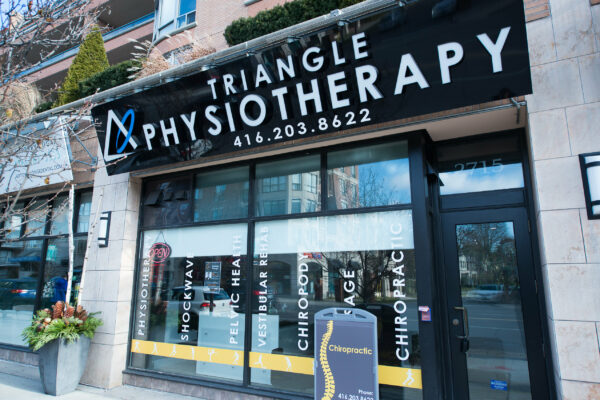
Our More Locations
Physiotherapy Etobicoke | Physiotherapy Oakville | Physiotherapy North York | Physiotherapy Toronto | Physiotherapy Lawrence Park | Physiotherapy Mississauga | Physiotherapy Queens Quay | Physiotherapy Mississauga Erin Mills | Physiotherapy Liberty Village
Click HERE to book an appointment with a physiotherapist at one of our eight locations.
- Physiotherapy Etobicoke – Triangle Physiotherapy Etobicoke
- Oakville Physiotherapy Clinic – Triangle Physiotherapy Oakville
- Physiotherapy North York – Triangle Physiotherapy North York
- Mississauga Physiotherapy Clinics – Triangle Physiotherapy Mississauga
- Downtown Physiotherapy Clinics – Triangle Physiotherapy King West
- Uptown Physiotherapy Clinics – Triangle Physiotherapy Lawrence Park
- Physiotherapy Clinic Downtown Toronto – Triangle Physiotherapy Queens Quay
- Physiotherapy Clinics Mississauga – Triangle Physiotherapy Erin Mills
“Understanding the cost of physiotherapy is essential when planning your care. Triangle Physiotherapy offers expert services across the GTA, including Physiotherapy in Etobicoke, Oakville, North York, Toronto, Lawrence Park, Queens Quay, Erin Mills, Mississauga, and Liberty Village. Our clinics provide transparent pricing and personalized treatment plans to ensure you receive the best care at a cost that suits your needs.”
Physiotherapy, also known as physical therapy, is a healthcare profession that focuses on the treatment and prevention of physical disabilities, injuries, and pain through exercise, manual therapy, and other modalities.
Here are the top 10 frequently asked questions and answers about physiotherapy:
What does a physiotherapist do?
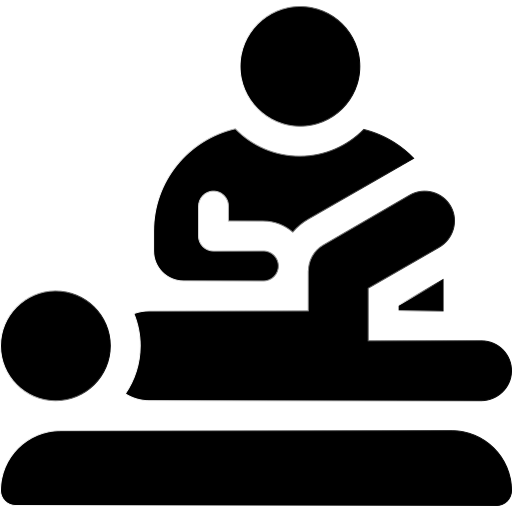
A physiotherapist diagnoses and treats a wide range of conditions affecting the musculoskeletal, neurological, and cardiovascular systems. They develop personalized treatment plans that may include exercises, manual therapy, electrotherapy, and other techniques to help patients recover from injuries or manage chronic conditions. Some Physiotherapists also have specialization in pelvic health, vestibular rehab, concussion management, and pediatrics. Physiotherapists are known to be advocates of movement and good health in the community.
What are the benefits of physiotherapy?

Physiotherapy can help improve mobility, strength, and flexibility, reduce pain and inflammation, prevent injury, and improve overall quality of life. It can also help people recover from surgeries or illnesses and manage chronic conditions such as arthritis, back pain, and stroke.
What conditions can physiotherapy treat?

Physiotherapy can treat a variety of conditions, including but not limited to musculoskeletal injuries such as sprains and strains, post-surgery rehabilitation, neurological conditions such as stroke and Parkinson’s disease, respiratory conditions such as asthma and chronic obstructive pulmonary disease (COPD), and chronic pain syndromes such as fibromyalgia. They can also treat pelvic floor dysfunction, incontinence, and other pelvic floor issues. Vertigo (BPPV) is another condition that some physiotherapists are trained in. Check out the detailed list of conditions on our website.
How long does a physiotherapy session last?

The initial assessment with a physiotherapist at our clinic is an hour long. Follow-up sessions are usually 30 minutes but some people may need longer sessions depending on their condition and treatment plan.
How many physiotherapy sessions will I need?

The number of physiotherapy sessions required varies depending on the condition being treated, the severity of the injury, and the patient’s individual needs. Our physiotherapist will work with the patient to develop a personalized treatment plan and will provide an estimate of the number of sessions needed.
Is physiotherapy painful?

Physiotherapy may involve some discomfort during treatment, especially if the patient is recovering from an injury. However, a physiotherapist will work within the patient’s pain threshold and provide techniques to manage any discomfort. The key is to communicate with your physiotherapist during your treatment session so they can adjust their treatment to keep you comfortable.
Do I need a physician’s referral to see a physiotherapist?

Physiotherapy is primary care in Ontario, so we do not need a referral to see you. However, if you will be claiming your treatments through a benefits plan, it would be best to check with your insurance about their referral requirements. If you will be visiting an OHIP clinic, you will most certainly need a physician’s referral to be covered. See OHIP-covered physiotherapy requirements here.
How do I choose a physiotherapist?

When choosing a physiotherapist, consider their qualifications, experience, and area of expertise. It may also be helpful to read online reviews and ask for recommendations from friends and family. Triangle Physiotherapy has 3000+ 5-Star Google reviews between all eight locations. We pride ourselves on the service we provide and our physiotherapists have a learning mindset so they are always learning new skills.
Is physiotherapy covered by insurance?

Most insurance plans cover physiotherapy, but coverage can vary depending on the plan and the specific services provided. It’s important to check with your insurance provider to determine your coverage.
Our More Locations
Physiotherapy Etobicoke | Physiotherapy Oakville | Physiotherapy North York | Physiotherapy Toronto | Physiotherapy Lawrence Park | Physiotherapy Mississauga | Physiotherapy Queens Quay | Physiotherapy Mississauga Erin Mills | Physiotherapy Liberty Village
How do I book an appointment to see a physiotherapist?
Click HERE to book an appointment with a physiotherapist at one of our eight locations.
- Physiotherapy Etobicoke – Triangle Physiotherapy Etobicoke
- Oakville Physiotherapy Clinic – Triangle Physiotherapy Oakville
- Physiotherapy North York – Triangle Physiotherapy North York
- Mississauga Physiotherapy Clinics – Triangle Physiotherapy Mississauga
- Downtown Physiotherapy Clinics – Triangle Physiotherapy King West
- Uptown Physiotherapy Clinics – Triangle Physiotherapy Lawrence Park
- Physiotherapy Clinic Downtown Toronto – Triangle Physiotherapy Queens Quay
- Physiotherapy Clinics Mississauga – Triangle Physiotherapy Erin Mills
“Physiotherapy plays a crucial role in improving mobility, managing pain, and enhancing overall health. Triangle Physiotherapy offers expert services across the GTA, including Physiotherapy in Etobicoke, Oakville, North York, Toronto, Lawrence Park, Queens Quay, Erin Mills, Mississauga, and Liberty Village. Our experienced physiotherapists provide personalized care to help you achieve your physical health goals.”
One of the most common questions that we are asked by patients calling our clinic is “Will OHIP cover my treatment?” or “Is physiotherapy covered by OHIP?”.
The answer is: It is covered by OHIP but in particular circumstances. Continue to read to get more information on if and when OHIP covers physiotherapy treatments.
Who is eligible to get OHIP-funded physiotherapy treatments?
With a valid OHIP card you can receive government-funded physiotherapy if you are:
- 65 years or older
- 19 years or under
- any age after an overnight hospital stay (within the last 12 months) for a condition requiring physiotherapy
- a recipient of the Ontario Works or the Ontario Disability Support Program (any age, OHIP card not required)
Remember, you have to have a referral from a doctor or nurse practitioner in addition to any of the above criteria.
Does ODSP cover physiotherapy?
You may be covered for physiotherapy under the ODSP program at an OHIP funded clinic. Contact your ODSP administrator for more information.
Where can I go to get OHIP-covered physiotherapy treatments?
The answer to your question, “Does OHIP cover physiotherapy?” is yes – OHIP covers physiotherapy ONLY at designated government-funded physiotherapy clinics and you have to meet some eligibility criteria. Not all clinics are able to provide OHIP-funded physiotherapy treatments.
Does OHIP cover physiotherapy for seniors?

Seniors over 65 years of age are covered for physiotherapy treatments provided all the eligibility criteria are met. However, you should read on for the disadvantages of visiting an OHIP-funded clinic.
Do I need a doctor’s referral to get treatment at an OHIP-funded physiotherapy clinic?
You need a referral from a doctor or nurse practitioner once you have met the eligibility criteria. This ensures that your condition is appropriately assessed and that you receive the most suitable treatment plan.
At Physiotherapy Oakville, we work closely with healthcare professionals to provide seamless and comprehensive care. Scientific studies emphasize the importance of coordinated care in achieving optimal health outcomes. By joining Physiotherapy Oakville, you gain access to a network of experts dedicated to your well-being, ensuring that your treatment is both effective and tailored to your specific needs. Our team will guide you through the referral process and collaborate with your healthcare provider to develop a personalized physiotherapy plan.
Is Triangle Physiotherapy an OHIP-funded physiotherapy clinic?
Triangle Physiotherapy is not an OHIP-funded physiotherapy clinic. Physiotherapy at Triangle is funded by the following:
- Extended Health Insurance Plans
- WSIB
- Auto Insurance if you have been in an accident
- Private pay
- Veterans Affairs Canada
We have physiotherapy clinics in Etobicoke, physiotherapy clinics in Oakville, physiotherapy clinics in Mississauga, physiotherapy clinics in North York and physiotherapy clinics in Toronto.
What are the disadvantages of going to an OHIP-funded physiotherapy clinic? 😞
While the biggest plus of going to an OHIP-funded physiotherapy clinic is that it is free, the eligibility criteria rule out most of us.
The disadvantages of getting treated at a government-funded clinic are:
- Wait times – the likelihood of you getting in to see a physiotherapist urgently is very low.
- Locations – the closest government-funded clinic might be an inconvenient distance away
- Over-booked schedule – the OHIP-funded clinics are reimbursed at a meager rate for each session, meaning that physiotherapists in OHIP-funded clinics can be double or even triple-booked in a single time slot. In addition, some clinics also do group sessions.
- Non-personal, non-individualized care – you may not see a physiotherapist for several sessions after your initial visit and be treated by a physiotherapy assistant.
What are the advantages of coming to Triangle Physiotherapy over going to an OHIP-funded physiotherapy clinic?
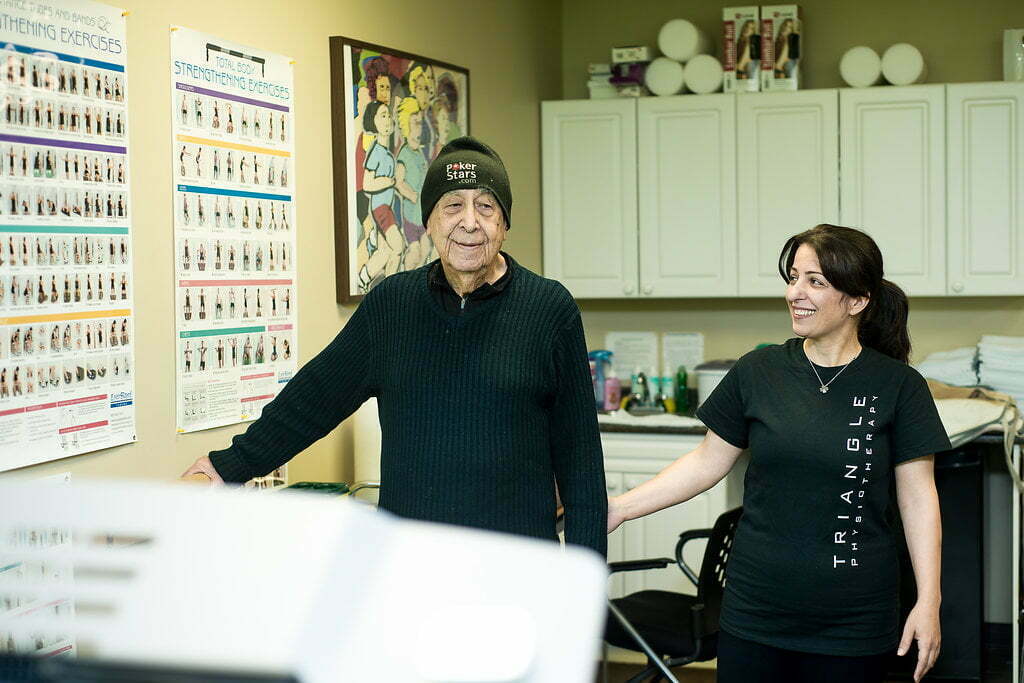
There are many advantages to seeing a physiotherapist at Triangle Physiotherapy over visiting an OHIP-funded clinic for treatment.
- Detailed one-hour assessment.
- One-on-one follow-up sessions – no group sessions or sessions with a PTA.
- Qualified physiotherapists with specializations in manual therapy, acupuncture, pelvic health, vestibular health, and more.
- In most cases, a doctor’s referral is not required. However, if you will be submitting your claim to an extended health plan, it is best to check if they require one.
- Convenient billing options – direct billing to insurance, pay by credit or debit card.
- Easily accessible locations.
- Best possible patient experience.
- Multi-disciplinary care – Massage Therapy, Chiropractic, Naturopathy, Chiropody.
- Morning, evening, and weekend appointments to suit your schedule.
Where can I find a great physiotherapist near me?
We have 8 convenient locations with physiotherapists to help you.
- Physiotherapy Etobicoke – Triangle Physiotherapy Etobicoke
- Oakville Physiotherapy Clinic – Triangle Physiotherapy Oakville
- Physiotherapy North York – Triangle Physiotherapy North York
- Mississauga Physiotherapy Clinics – Triangle Physiotherapy Mississauga
- Downtown Physiotherapy Clinics – Triangle Physiotherapy King West
- Uptown Physiotherapy Clinics – Triangle Physiotherapy Lawrence Park
- Physiotherapy Clinic Downtown Toronto – Triangle Physiotherapy Queens Quay
- Physiotherapy Clinics Mississauga – Triangle Physiotherapy Erin Mills
Book an appointment to see a physiotherapist in Toronto today!
“Understanding whether OHIP covers your physiotherapy treatment is crucial for planning your care. Triangle Physiotherapy offers expert services across the GTA, including Physiotherapy in Etobicoke, Oakville, North York, Toronto, Lawrence Park, Queens Quay, Erin Mills, Mississauga, and Liberty Village. Our team can help you navigate your insurance options and provide the care you need, whether or not it’s covered by OHIP.”
Written by Roshni Ravi, Pelvic Health Physiotherapist
Constipation is a common gastrointestinal (GI) condition that causes difficulty with passing stool or reduces the frequency of having a bowel movement. It can be caused by
– dehydration
– diet e.g. not enough fibre
– sedentary lifestyle
– Ignoring the urge for a bowel movement due to pain.
– Pelvic organ prolapse (POP)
– Medications such as anti-inflammatories, iron supplements or anti depressants.

Medically, constipation is defined as having fewer than 3 bowel movements a week with hard stools.
Pelvic muscle dyssynergia (incoordination) can lead to constipation. During a typical bowel movement, the pelvic floor needs to relax in order to evacuate stool. When there is tightness in the pelvic floor muscles, it can be painful or uncomfortable to pass stool.
Treatment for constipation can include a number of lifestyle modifications such as increased fibre and water intake, and regular exercise. However, consulting with a pelvic physiotherapist can improve outcomes, by creating an exercise program specific to your pelvic floor dysfunction. The need for lengthening versus strengthening of the pelvic floor is determined through internal vaginal or rectal examination. Another option is seeing a naturopath for ways to adjust your diet accordingly. Quite often, both treatments go hand in hand.
Experiencing constipation or constipation like symptoms? Book a consultation with one of our pelvic physiotherapists today!
“Pelvic physiotherapy can be an effective solution for relieving constipation and improving overall pelvic health. Triangle Physiotherapy offers specialized services across the GTA, including Physiotherapy in Etobicoke, Oakville, North York, Toronto, Lawrence Park, Queens Quay, Erin Mills, Mississauga, and Liberty Village. Our experienced team can help you develop a personalized treatment plan to address constipation and enhance your quality of life.”

